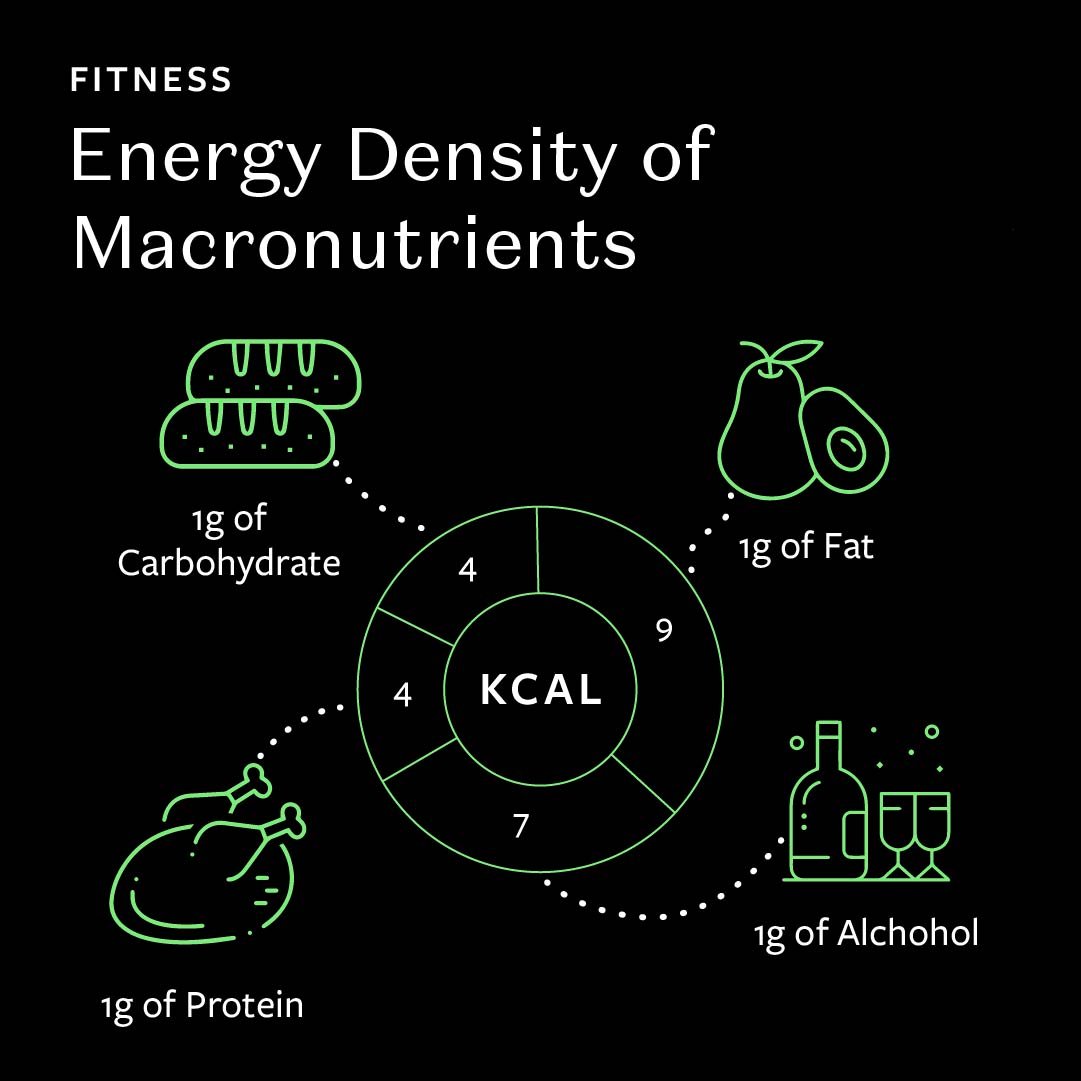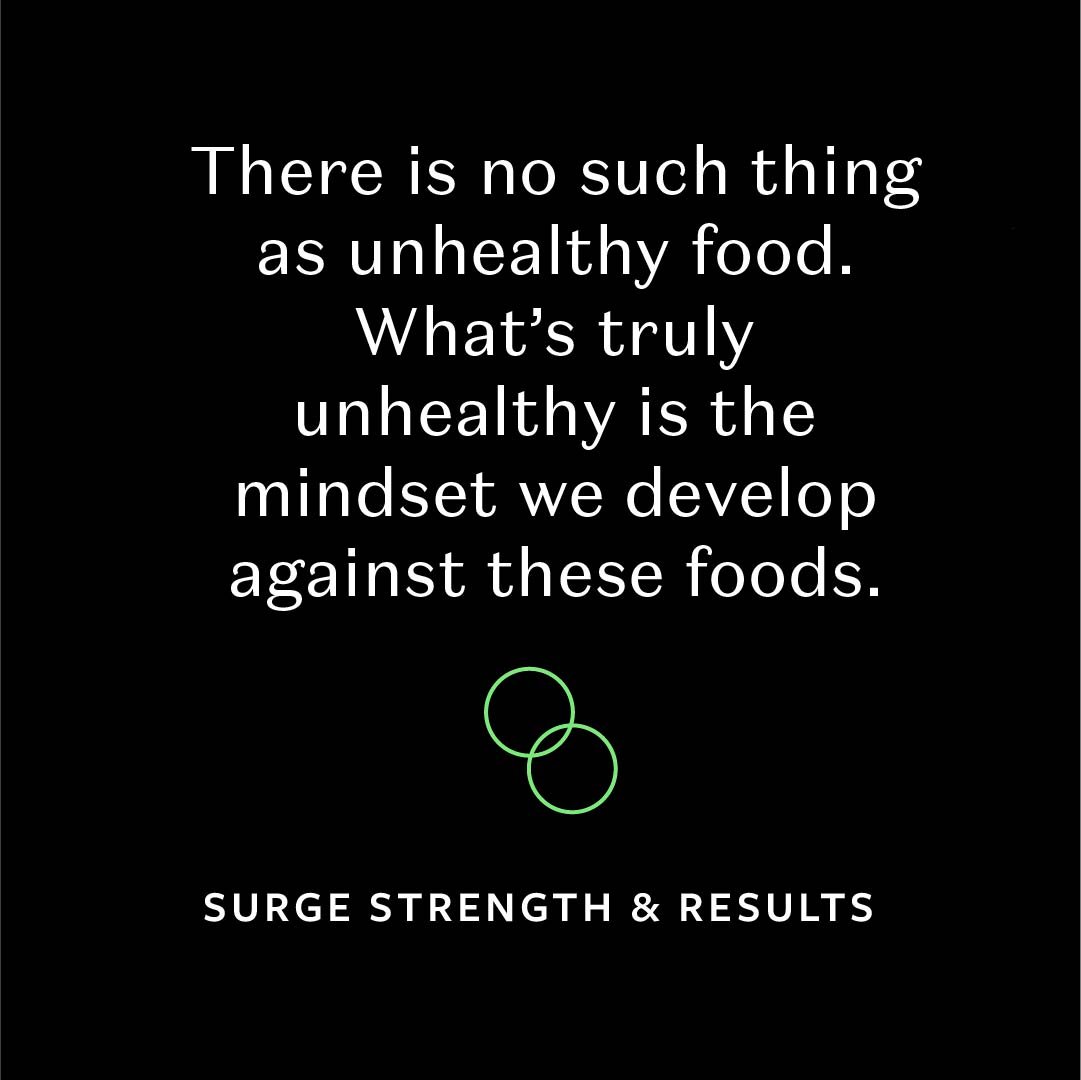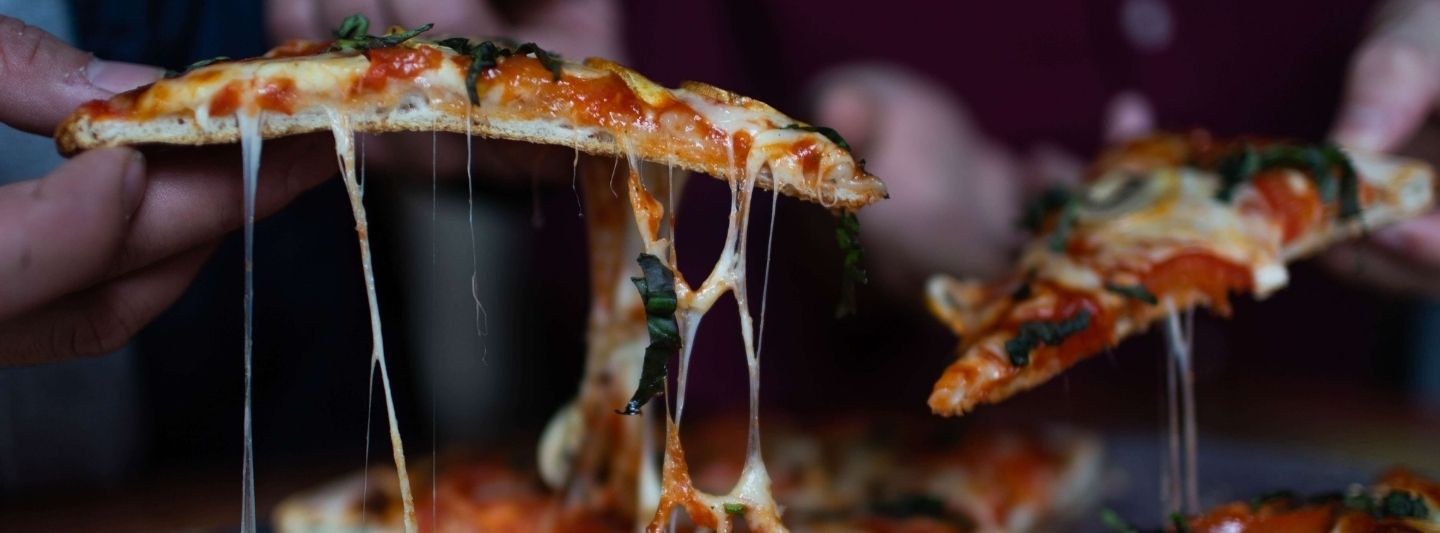How many times have you read, said, or heard the following: ‘Pizza? That’s so unhealthy!’, ‘Do you know how many calories there are in a pizza? Why would you want to eat that!’, ‘I/You can’t eat a pizza, I'm/you’re on a diet’.
There’s a 99% chance you said ‘yes’ to one of the above. Let’s assume that instead of pizza, that it was ice-cream, a burger, pop-tarts, cheesecake, french fries, basically all the things that taste amazing but are supposedly ‘unhealthy’ foods - the premise is still the same.
Should we be categorising foods as healthy and unhealthy? Should we tell people not to eat a certain type of food? Should we tell people that the keto or paleo diet is the only way forward?
The purpose of this article isn’t to advocate any one particular way of eating, but more to get you to take a step back and think about why on earth you would give up on food just because some nutritionist, doctor, celebrity fitness trainer, your own personal trainer or self-proclaimed Instagram food expert told you to.
Before we dive into the main course, let’s start by breaking down what food really is. Calories. Everything you eat has its own calorie value. A calorie is the amount of heat needed to raise the temperature of one gram of water by one degree celsius. Our bodies store and burn calories as fuel. Simple enough? Sure, not all calories are created equal, but that topic probably needs an entire article on its own.
Now, we have macronutrients which are: Protein, Fats, Carbohydrates (that includes Fibre) and Alcohol. Each gram of these also has a certain calorie value, for example, 1 gram of protein has 4 calories, 1 gram of fat has 9 calories, 1 gram of carbohydrate has 4 calories and 1 gram of alcohol has 7 calories.

A slice of pepperoni pizza can have anywhere between 300-450 calories. I mention this now because we’ll be using pizza a lot in this article, and it’s not because we want you to like/eat/or think about pizza, it’s because we like it.
Growing up as a kid, we bet you ate it. Once a week, once a fortnight, or once a month, it was on your plate in all its cheesy glory, and your smile grew wider with every single bite you took. You probably had more than one slice too! So why now, when we start thinking about our health, fitness and longevity or whatever other word you’d like to use, do we suddenly put pizza in an unhealthy food group? Does this mean we were unhealthy as kids or does it just mean that in this internet driven world that we follow the lead of all these so called experts because it’s become the societal norm?
If and when you decide to embark on a journey to improve your health and fitness, which may include weight loss, fat loss, muscle gain or improving your health markers such as cholesterol and blood pressure, please also remember that the pizza you so badly want once a week isn’t the reason why you’re unhealthy in the first place. It’s because you have a sedentary lifestyle, you don’t exercise or move much, eat poorly more often than not, and probably have a lot of stress in your life (which leads you to eat more than you need).
This mindset of complete elimination of foods or food groups from one's diet or life is the sole reason why people today have developed bad relationships with food and will continue to do so until someone (hopefully us through this article), explains this to them.
When you start thinking about food as healthy versus unhealthy, you’re probably making yourself more unhealthy (figuratively). Here are some fairly common scenarios you may have come across in your recent past: You’re having pizza tonight so you better get a workout in or do some cardio in the morning. You had a pizza last night, so you need to eat less today to balance it out. You want a pizza on Sunday, so you should eat chicken and vegetables all week so you “earn” the pizza. You want a pizza but to make it healthier, you use cauliflower for the base so you can eat the whole thing instead of just one slice. FYI - chances are you’ve eaten more calories this way anyway, and please don’t call it a pizza if you used cauliflower for the base. There are a lot of Italians that wouldn’t be too happy about that!
If you want to lose weight, you need to be in a slight/moderate daily (and weekly) caloric deficit over a period of time. If you want to maintain your weight, you need to be at what we call “maintenance” calories. If you want to gain weight, then you need to be in a slight/moderate daily (and weekly) caloric surplus over a period of time. That’s it in a nutshell, but once again, to discuss this at length would require an article by itself.
Rather than thinking about foods as healthy vs unhealthy, think about what your goal is first. Then think about whether or not eating pizza everyday is optimal for that goal. If it is not, then don’t do it! But it doesn’t mean you should avoid it entirely. One slice, once a week, is NOT going to make you fat or unhealthy. It’s probably going to make you feel totally awesome because you can have this so-called “unhealthy food” once a week and that’ll more likely keep you on track with your goals versus eliminating it completely.

If you want to develop a healthy lifestyle, a healthier body/physique, then you need to develop a healthy mindset, which almost certainly includes the way you perceive food and the relationship you have with it. There is no such thing as unhealthy food. There’s just less healthy, less optimal, and less nutritious. What’s truly unhealthy, is the mindset we develop against these foods, especially when we start eliminating them or considering them forbidden.
If you truly want to live a healthier life, you need to first, develop a healthier mindset.
This article was written by Rishi Mirpuri and Sam Gallo from SURGE: Strength & Results. If you'd like to know how SURGE can help you with your fitness goals, email  today!
today!
Contributor:

 was the brainchild of Sam Gallo and Rishi Mirpuri - two of the most reputable personal trainers in Singapore with a common goal in mind; to take clients and forge them into a stronger, higher-performing and more durable version of themselves.
was the brainchild of Sam Gallo and Rishi Mirpuri - two of the most reputable personal trainers in Singapore with a common goal in mind; to take clients and forge them into a stronger, higher-performing and more durable version of themselves.






